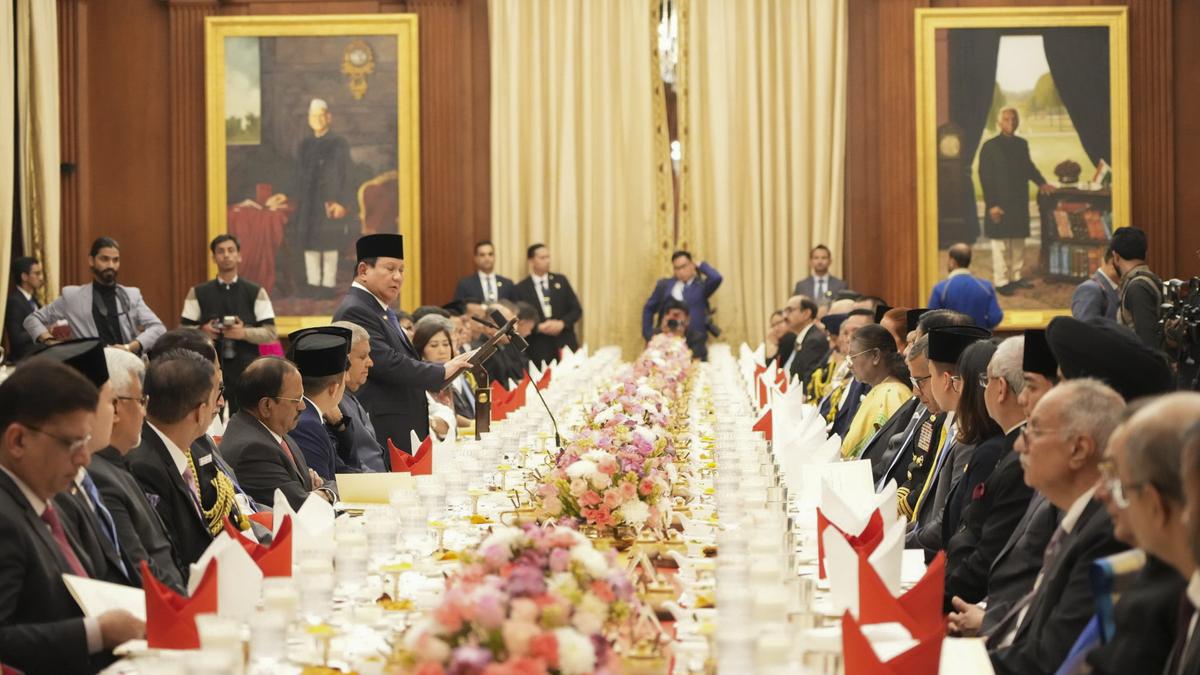It was a great honour for this writer to have accompanied President Prabowo Subianto of Indonesia, who was the chief guest at India’s spectacular 76th Republic Day celebrations. The magnificence of the occasion was not only reflected in the vibrant displays of India’s democracy, diversity and military strength, but was also a timely reminder of the deep and enduring relationship between the countries, which can be a beacon for wider international relations.
The evolution of ties
Indeed, as India celebrated its first Republic Day in 1950, marking its new destiny as a sovereign and democratic nation, it was Indonesia’s founding father, President Sukarno, who graced the occasion as chief guest.
In subsequent decades, as the two countries embraced their independence, they have built strong ties, spanning economics, politics and culture. In fact, this year was the fourth time that an Indonesian President has been chief guest at the Republic Day celebrations. Mr. Prabowo’s visit, and his meeting with Indian Prime Minister Narendra Modi, highlighted the shared ambition of the two leaders to further increase collaboration in areas that include trade, maritime security, health and technology.
As two of the world’s largest and fastest growing economies, Indonesia and India have immense potential to become the cornerstone for prosperity and security for the entire Indo-Pacific region and beyond. In particular, this writer’s visit convinced him that there are three key areas of trade, security and geo-politics.
Editorial | India with Indonesia: on ancient ties to a new phase
First, whilst the two countries signed a trade agreement back in 1966, from today’s vantage point there is a huge amount that can be done to grow economic ties between the two countries. As Chairman of the Indonesian Chamber of Commerce, this writer co-chaired the CEOs Forum alongside Indian business leader Ajay S. Shriram in New Delhi. Bringing together senior business leaders from India and Indonesia, we identified five key sectors that should be prioritised to unlock mutual growth, boost innovation and strengthen bilateral ties, i.e., in energy, food and agriculture, health care, manufacturing and technology.
Trade and security as pillars
Throughout the discussions, it became clear that there are immense opportunities to increase bilateral trade, which currently stands at just under $30 billion. There is the potential to quadruple the volume of trade in the next 10 years. Ambitious growth targets reflect the confidence the two nations have in each other’s potential and in their continued partnership.
Against a backdrop of global economic uncertainty, India and Indonesia are forecast to grow by 6.5% and 5.1%, respectively, this year, which is well above the global growth average of 3.3%. This reflects their expanding markets, young and dynamic workforces as well as growing consumer demand.
There is also huge untapped potential for both countries to benefit from intelligent investment that can position them as leaders in energy transition. While Indonesian investment in India stands at $653.8 million and India has invested $1.56 billion in Indonesia, this only scratches the surface of what is possible. By deepening their investments and supply chains in sectors such as clean energy, technology and manufacturing, the two countries can lead the global effort against climate change.
Security is the second pillar of the India-Indonesia partnership. In recent years, they have made significant strides in strengthening defensive ties, culminating in the Comprehensive Strategic Partnership in 2018, which is already yielding significant dividends, particularly in enhancing maritime security in their shared waters.
But defensive cooperation is only one aspect of their multifaceted relationship. During Mr. Prabowo’s visit, Mr. Modi and Mr. Prabowo committed to strengthening collaboration in areas such as counterterrorism and cyber security to keep the two countries safe.
As two large, populous nations with growing military capabilities, this is essential if the two countries are to address the complex geopolitical dynamics of the Indo-Pacific and safeguard its stability and prosperity for generations to come.
International relations
A third element of the bilateral relationship is how it fits in the global context. Outside of the Indo-Pacific, India and Indonesia are both navigating a geo-political environment that is constantly shifting. At the start of the year, Indonesia was formally invited to join the BRICS group of emerging economies. In that club of powerful emerging economies, it joins India and, of course, China too. At the same time, both Indonesia and India have important relationships with the United States and other western countries. The new U.S. administration led by President Donald Trump has threatened to introduce a new set of tariffs, and it remains to be seen what will happen.
It is obvious that tariffs and non-tariff barriers are impediments to free trade and carry risks for the global economy. Indonesia, as a key source of natural resources such as nickel, copper, tin and bauxite, wants to be able to export to the U.S., India and other markets.
President Prabowo’s visit to India was a reminder of the importance of Indonesia’s bilateral relationship with Indonesia. Their partnership, 76 years old, continues to grow in strength and their potential to shape the future of the Indo-Pacific and the global economy is vast. As the two countries continue to work together through trade, security and their geo-political ties, they will not just strengthen the bonds between the two great nations but also lay the foundation for a more prosperous and sustainable future for Asia and the world.
Anindya Bakrie is Chair of the Indonesian Chamber of Commerce and Industry (KADIN), and CEO of Bakrie & Brothers
Published – February 05, 2025 12:08 am IST
